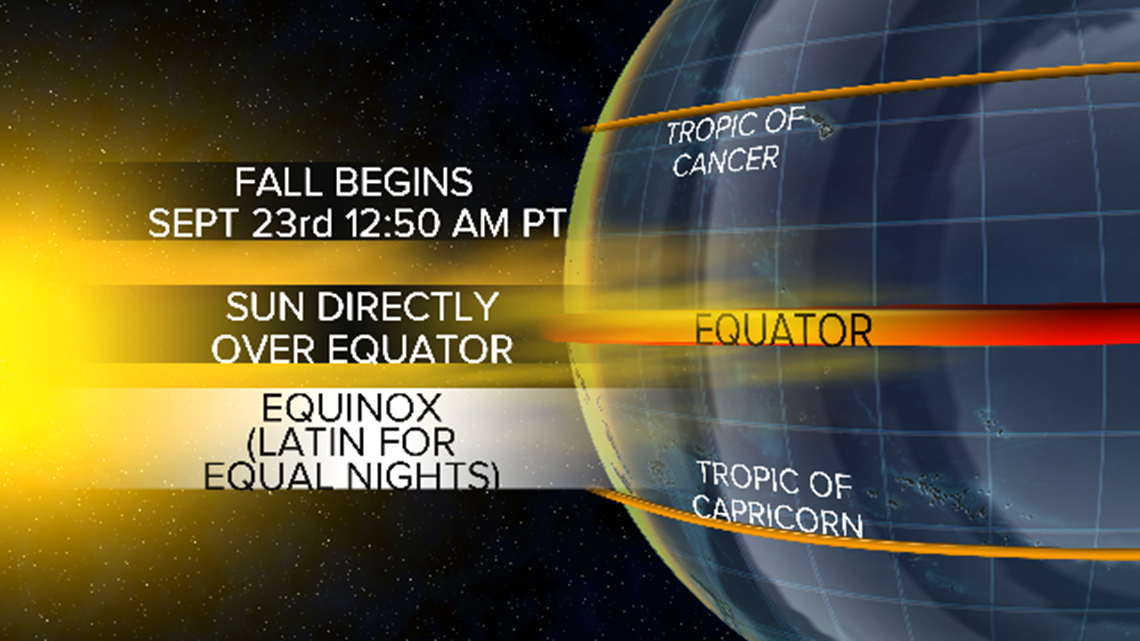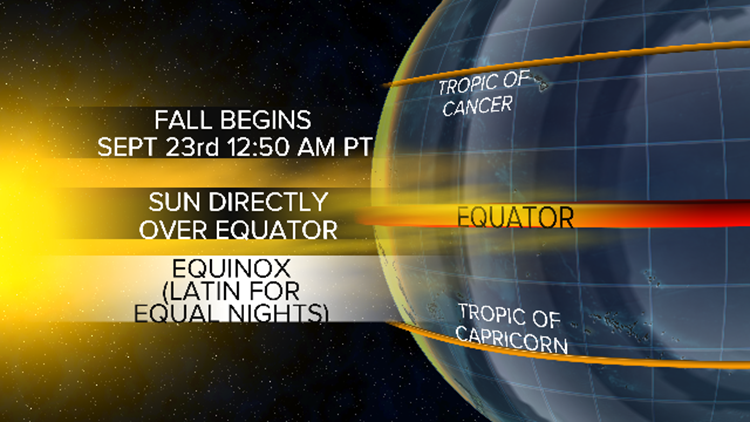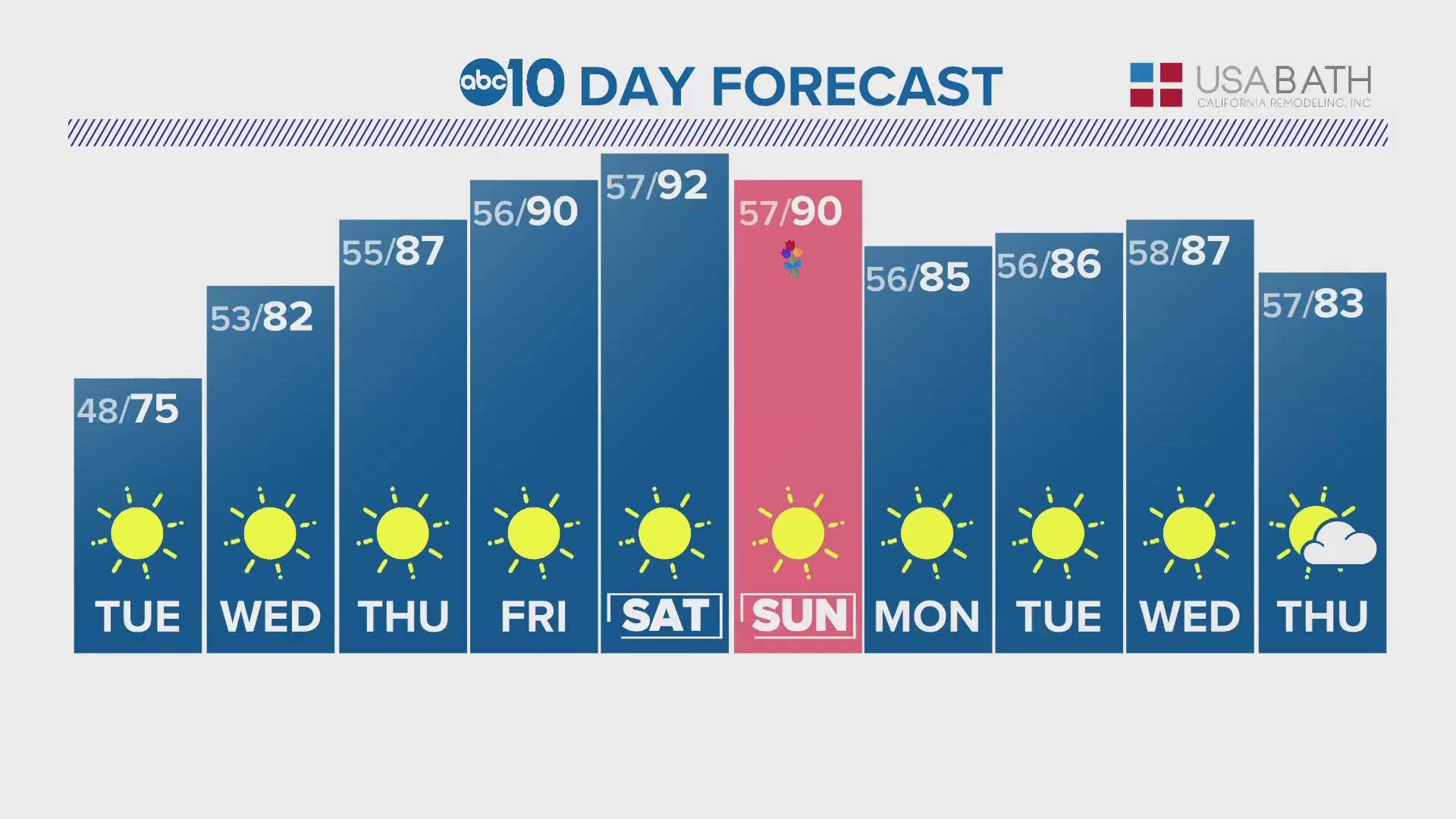SACRAMENTO, Calif. — The center of the sun is positioned over the earth’s equator during March and September. At that time, the sun’s direct rays are overhead as opposed to being at different angles throughout the year. This creates close to equal amounts of daylight hours as night hours.
Monday’s sunrise in northern California was at 6:55 am while the sun will set at 7:02 p.m. For the next few days we can experience almost the same amount of light.
As we approach winter, we all know the days get shorter and the nights get longer. This is also due to the position of the earth to sun overhead. The sun although closer to earth in December, disperses its rays differently. This is where it may get confusing.
The distance from earth to sun would make you think we have more sunlight if the sun is closer, but it’s actually the earth’s tilt and elliptical orbit that causes the seasons, and in turn the amount of daylight hours. The tilt of the earth keeps the sun lower in the sky as we reach the winter months, so sunrise and sunset happen much quicker than during summer months.




Just know, as we hit the first day of fall this is the longest daylight we will see until March 19, 2020. After that, the days will continue to get longer up until Summer Solstice, the longest day of the year.


